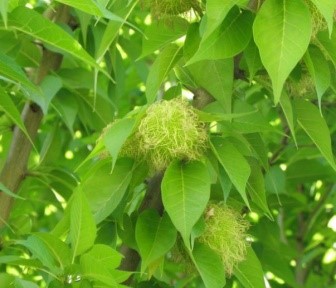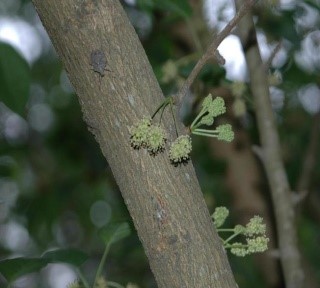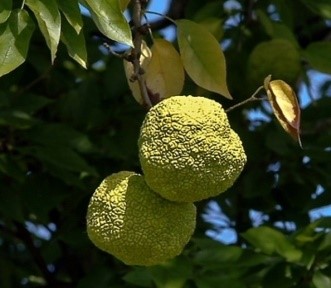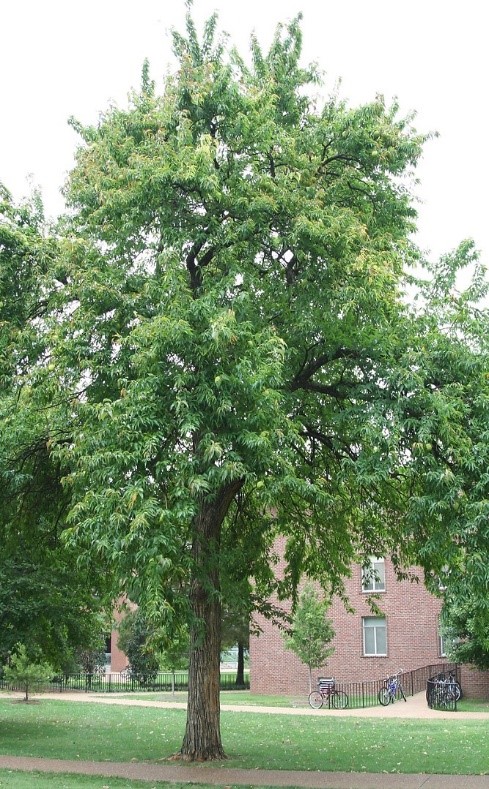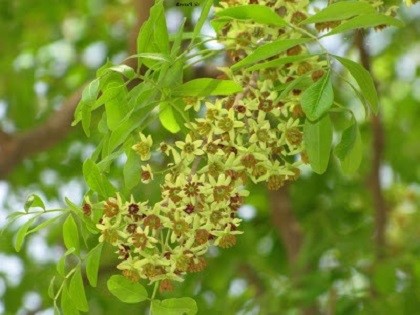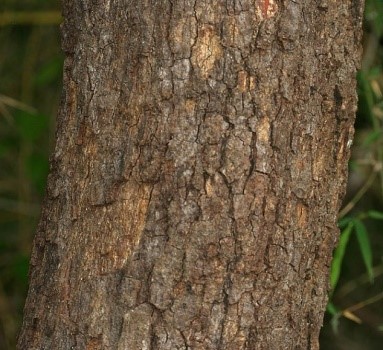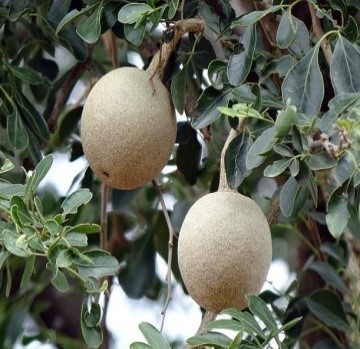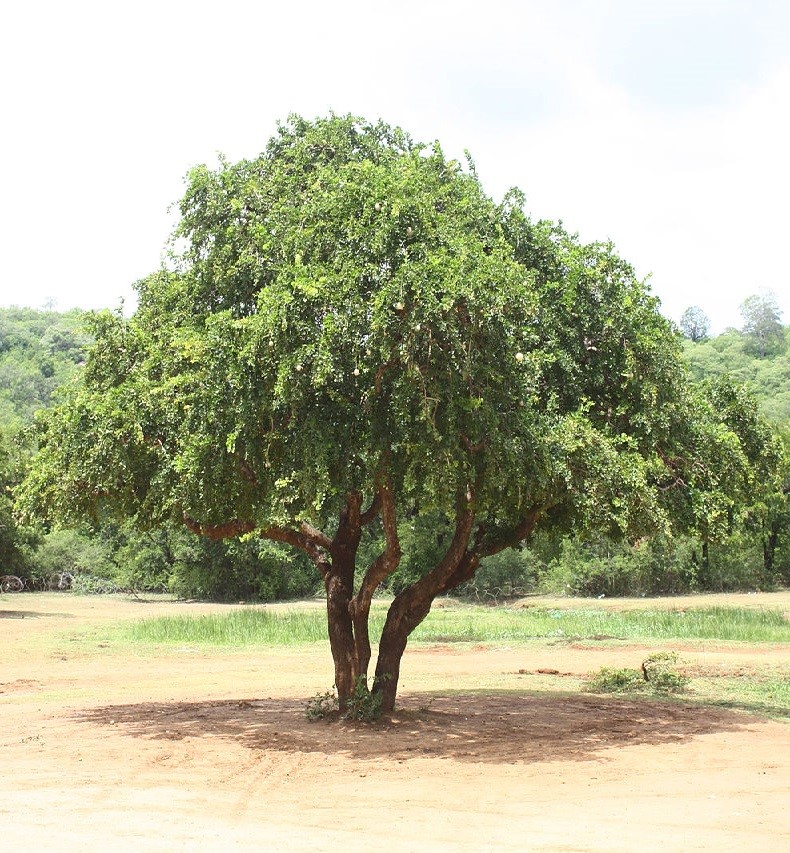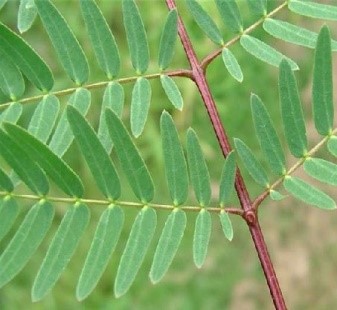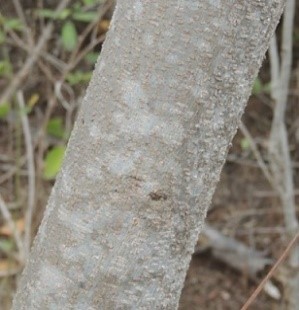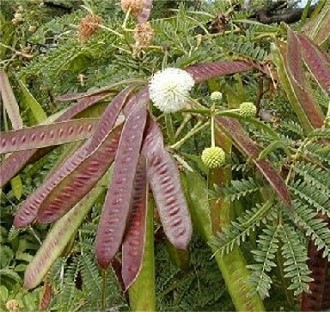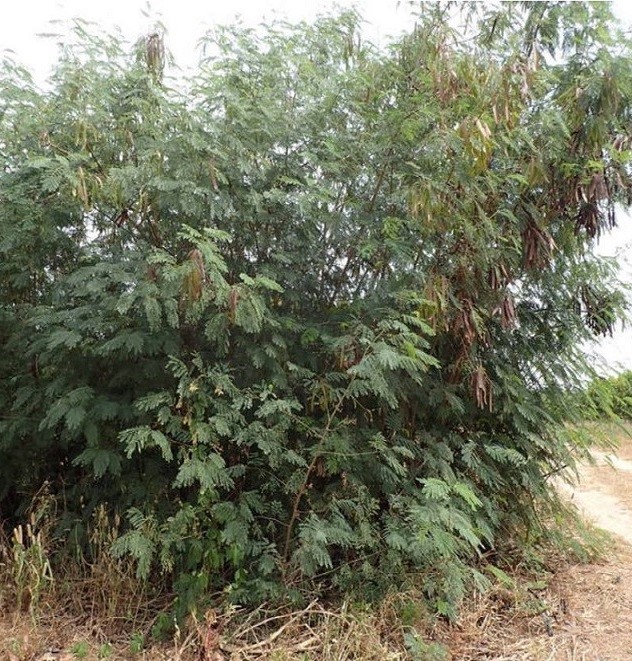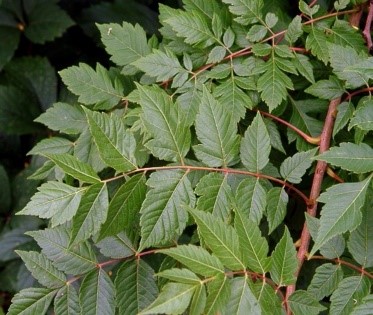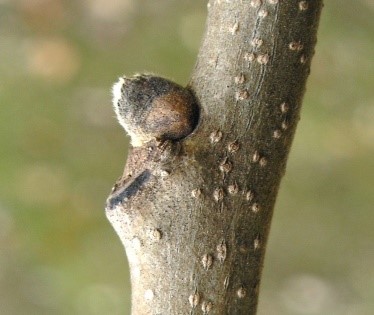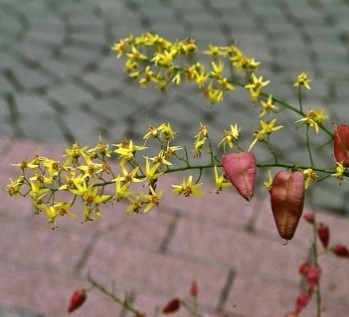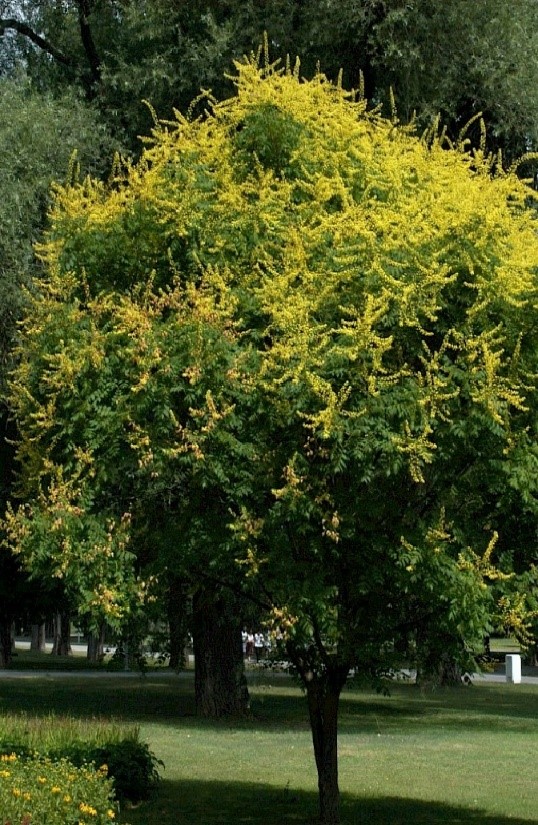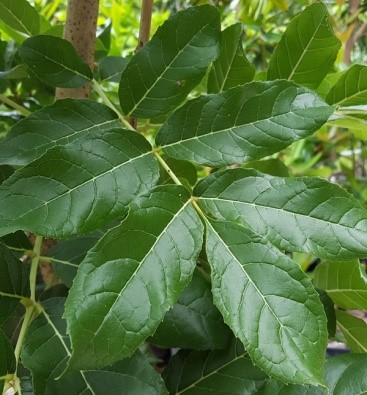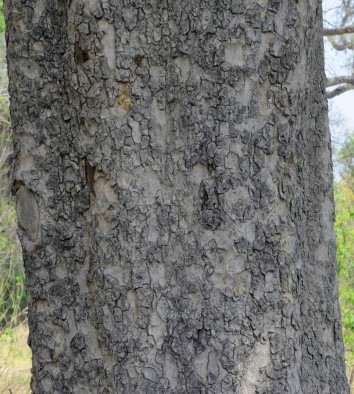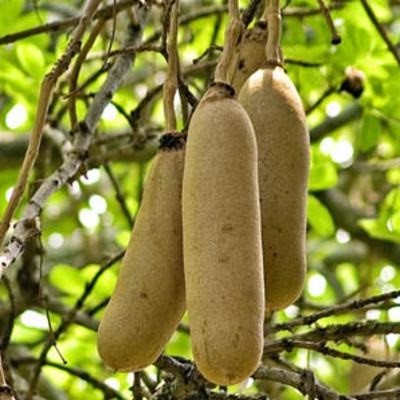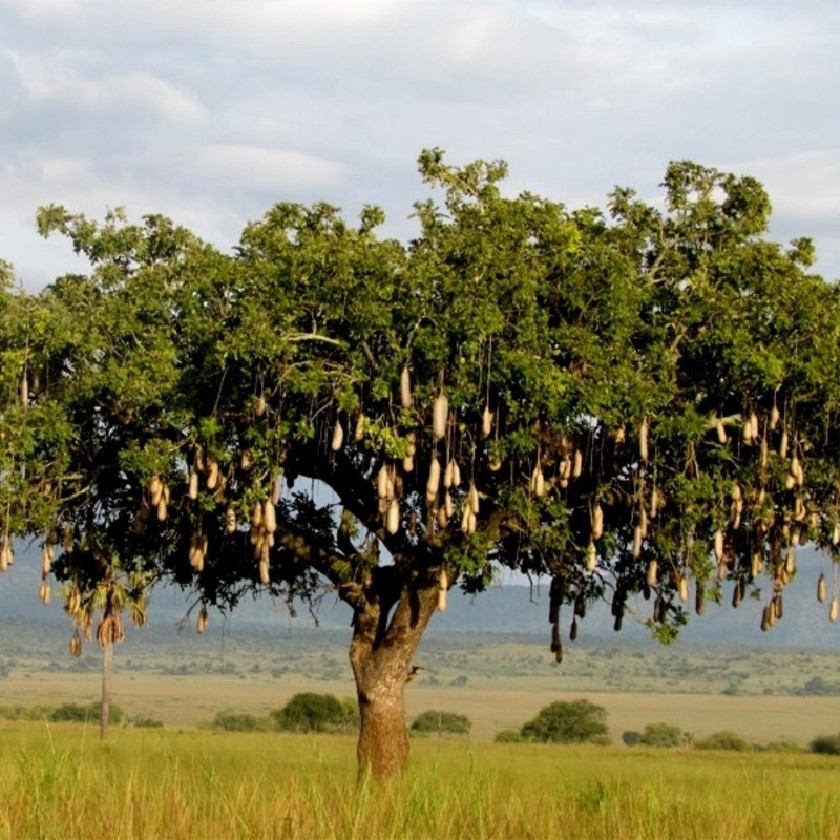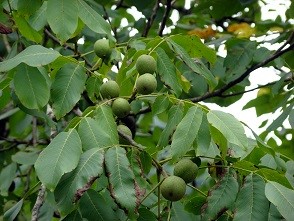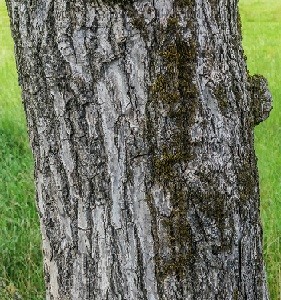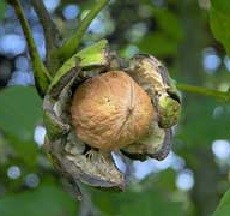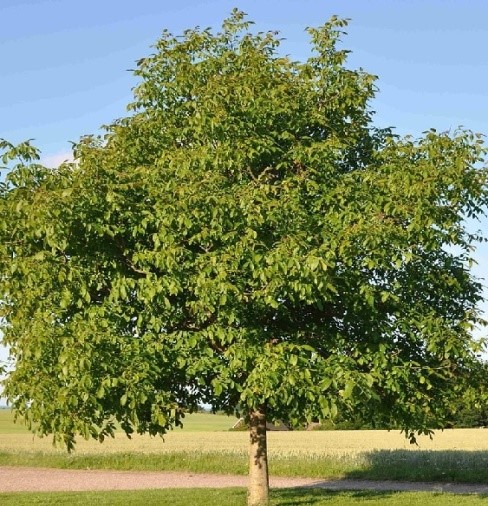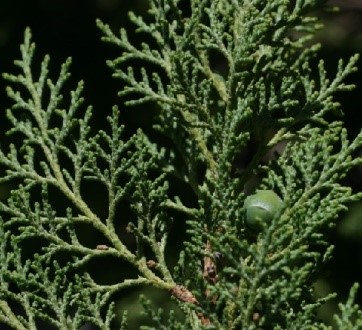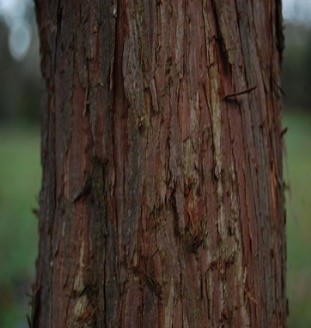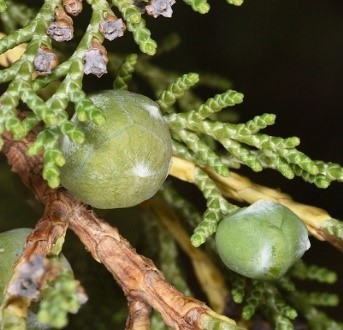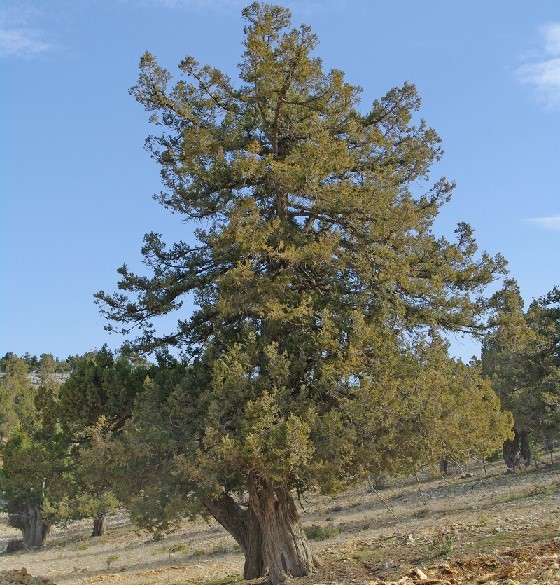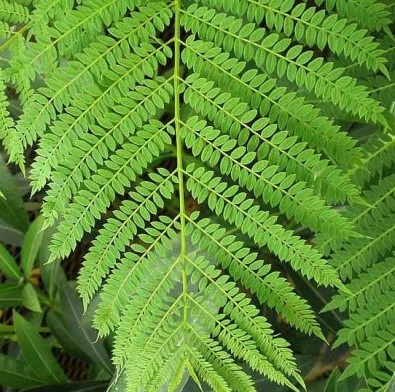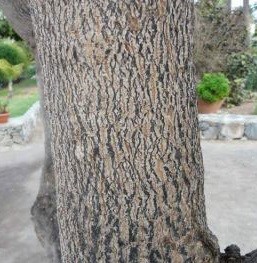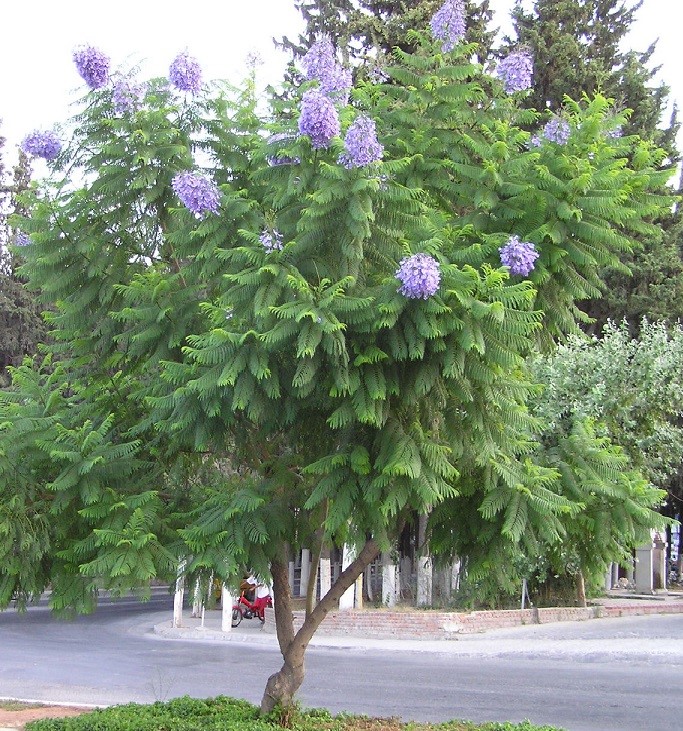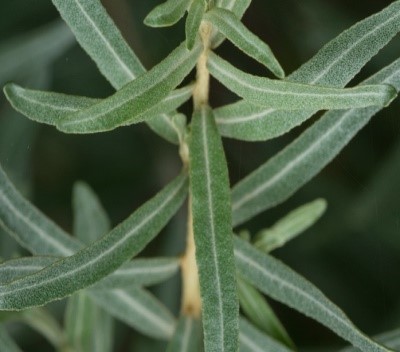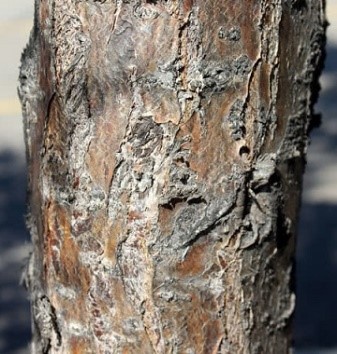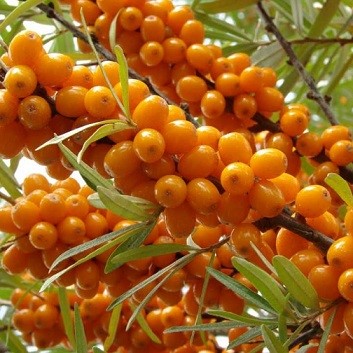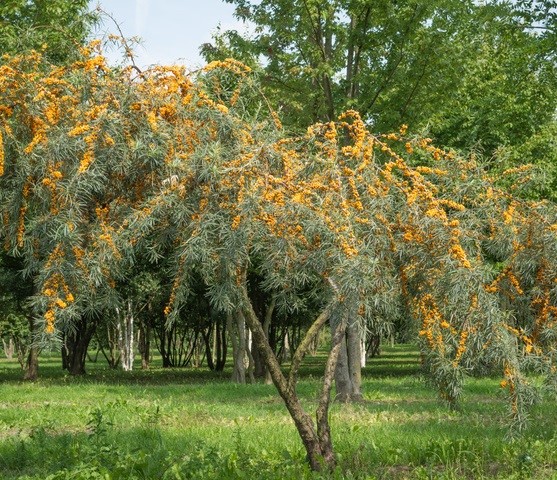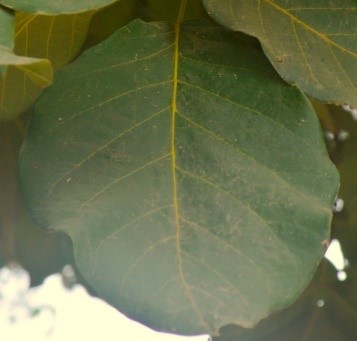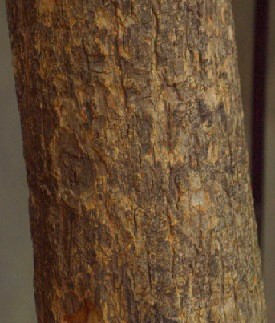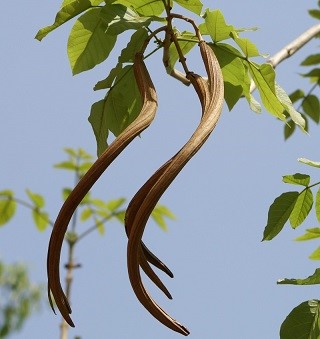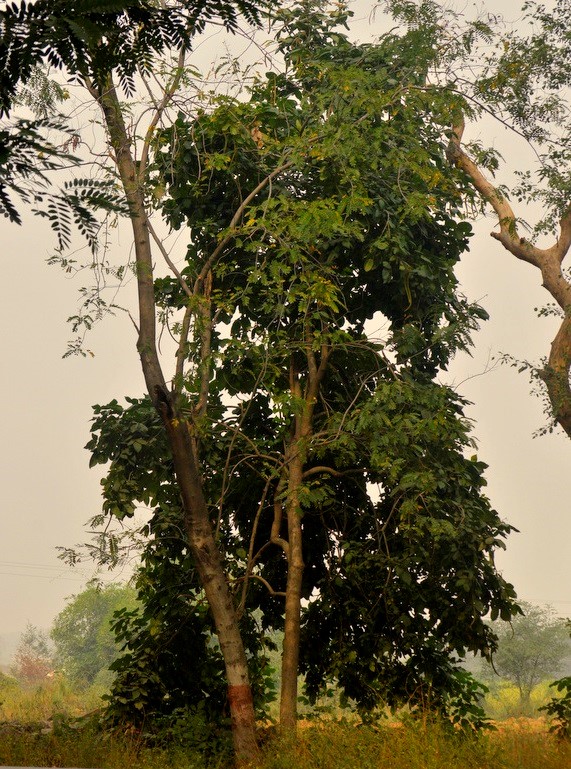Trees of Pakistan
Maclura pomifera (R.af) Schneid.
Family Name: Moraceae
Local Name : Maclura
English Name : Osage orange
Description : Fully grown tree of this plant ranges from 12 to 20m in height. It has short trunks and round-topped canopies. It has thick grey-brown roots. The bark of fully mature tree is dark, scaly and furrowed. Branchlets are greenish yellow in colour Leaves are arranged in alternate pattern in a slender growing shoot is 80 to 30cm long. The leaves are 6 to 14 cm long and 4 to 9 cm wide and change into bright yellow in autumn season. Branches are bright green in start then later they become light brown and finally they become orange, brown. Flowers of the plant are four-lobed calyx, hairy ovary and enclose the fruit. The size of mature fruit resembles like a large yellow-green-orange fruit, and the fruit is about 10-15cm in diameter. The fruit tastes like the cucumber. Seeds cream colored,
Limonia acidissima L.
Family Name: Rutaceae
Local Name : Kaith bel
English Name : Wood-apple and Elephant-apple
Description : This plant is a large tree growing to up to 9m tall, with spiny and rough bark. The leaves are pinnate, with 5-7 leaflets; each leaflet is about 25-35mm long and 10-20mm wide, with a citrus smell when crushed. The flowers are whitish and have 5 petals. The fruit is a berry of about 5-9cm diameter and may be sweet and sour. It has a very hard rind which can be difficult to crack and open. It has greenish brown colour from outside and contains sticky brown pulp and small white seeds. It contains considerable amount of protein, carbohydrate, iron, fat, calcium, Vitamin B, C etc. 100g of ripe fruit pulp contains up to 49 KCal.
Leucaena leucocephala (Lam.) de Wit.
Family Name: Leguminosae
Local Name : Subabul
English Name : Ipil Ipil
Description : A fast growing, evergreen shrub or small tree 5 to 20 m tall. Diameters to 20 cm are common, spending on whether tree or shrub like form. Foliage is feathery-like and the leaves are compound. Leaves are 7 to 15 cm long, while the leaflets are small, 3 cm long. The flowers are small, white, look like "powder puffs", and occur between June and November. The pods are in bunches, flat and long. They are brown when ripe and mature between September and December. It can be reproduced both from seed and by vegetative means. Seed can be stored without special considerations for several years and maintains its viability. Pre-treatment of seed with a water soak will speed up germination. Young plants need protection from grazing and frost. Because of its tolerance and seed habit it can qu
Koelreuteria paniculata Laxm.
Family Name: Sapindaceae
Local Name : Sunehri Burkha
English Name : Golden Rain Tree
Description : This plant is a small to medium sized deciduous tree growing up to 7 m tall, with a broad, dome shaped crown. The trunk has the colour of greenish brown The leaves are pinnate and are 15-40cm long, leaflets are up to 3 to 8cm long, with a deeply notched margin; the larger leaflets at the midpoint of the leaf are sometimes themselves pinnate but the leaves are not consistently fully bipinnate. The flowers are yellow, with four petals, growing in large terminal panicles of about 20-40cm long. The fruit is a three-part inflated bladder like pod of about 3-6cm long and 2-4cm wide. Young fruit is green, then become orange and then after fully ripening in autumn. It contains several dark brown to black seeds of about 5 to8mm diameters.
Kigelia pinnata L.
Family Name: Bignoniaceae
Local Name : Gul-e-fanoos
English Name : Sausage tree
Description : This species is to up 25m tall with usually broad and rounded crown. Leaves are opposite and are in whorls of 3. The bark is smooth and grey in the start, peeling on mature trees. It can be as thick as 6mm on a branch of 15cm diameter branch. The wood is pale brownish or yellow, not prone to cracking and is undifferentiated. Fruit is sausage shaped and cylindrical, and up to 1m long and 18cm in diameter. The fruit can weigh up to several kilograms and look like large sausages.
Juglans regia Linn.
Family Name: Juglandaceae
Local Name : Akhrot
English Name : Walnut
Description : A large, deciduous tree, 15 to 30 m tall with diameters of 1 to 1.5 m. The crown is broad, spreading and rounded. The leaves are compound, with leaflets 7 to 20 cm long and 5 to 10 cm wide, oval to oblong, pointed and the edges not usually toothed. The bark is grey becoming darker with age. The younger bark has long vertical striations that deepen with age. Older bark will also be cracked transversely. It is monoecious. Male flowers are in bunches 5 to 12 cm long growing on last year's shoots. Female flowers occur as singles or in two or three between February and April. The fruit is a fleshy drupe, greenish yellow spotted, oblong in shape 5 cm long. Inside the drupe is the nut in a hard, wrinkled shell. The fruiting period is June to October. It coppices at an early age. The tr
Juniperus excelsa M. Bieb.
Family Name: Cupressaceae
Local Name : Obusht, Sanobar
English Name : Himalayan Pencil Cedar
Description : A medium-sized, evergreen tree, up to 25m tall with diameters of 0.6 to 0.8 m. It has a conical crown. The leaves are scale like. There are two leaf shapes, one sharp and needle like and the other flat and feather like. It is monoecious. The male flowers or cones are located at the tips of the branches while the female cones are on shorter branchlets. The flowers appear between May and June. The fruit is a woody cone 0.7 cm in diameter. Each cone contains 2 to 5 seeds. The cones mature between September and October. It is reproduced mainly from seed. Under natural conditions layering has been reported. Seed viability is approximately 5 percent. It has to be sown immediately after collection to get good germination. In the nursery beds, the seed keeps on germinating for 2 years,
Jacaranda ovalifolia D. Don.
Family Name: Bignoniaceae
Local Name : Nila Gul Mohar
English Name : Jacaranda
Description : A small sized deciduous tree (may appear to be evergreen at lower elevations). Heights of 12 m are not uncommon. Leaves are compound, 25 cm long. Usually there are 15 to 20 paired leaflets per leaf. The bark is creamy brown, furrowed vertically and cracked horizontally into narrow scales. The bell-like flowers are blue violet and have a fragrance of honey. The flowers occur in dense clusters in March but may flower more than once a year. The fruit is a large capsule, or pod 7.6 to 5 cm long, oval which contains numerous seed. Pods may hang on the tree for 2 years. The fruit may mature twice a year. It is susceptible to mealy bug infestations. It can be reproduced from seed. The seed is viable only for one year. It grows approximately 1m in height every year. Because of its large
Hippophae rhamnoides
Family Name: Elaeagnaceae
Local Name : Sea buckthorns
English Name : Sea buckthorns
Description : This plant is evergreen or deciduous shrub that can grow up to the height of 2 to 4 m high. It has a rough, brown or black bark and a thick, grayish-green crown. The leaves of the plant are narrow, alternate. This plant is dioecious, which means that the male and female flowers grow on different shrubs. The sex of seedlings can only be determined at the first flowering, which mostly occurs after 3 years. The male inflorescence is built up of 4 to 6 apetalous flowers, while the female inflorescence normally consists of only one apetalous flower and contains one ovary and one ovule. Fertilization occurs only by wind pollination, so male plants need to be close to female plants to allow for fertilization and fruit production. The fruits are oval or lightly roundish, with varying fr
Heterophragma adenophyllum Seem.
Family Name: Bignoniaceae
Local Name : Sanp Phali, Mostan Phul
English Name : Karen wood
Description : A moderate sized deciduous tree. Leaves are compound, large 0.3 to 0.6 m long. Usually there are 5 to 7 leaflets per leaf. The flowers are large, brownish yellow, 6.35 to 7.62 cm across. It flowers in November. The fruit is a large capsule 0.3 to 0.9 m long cylindrical ribbed, and twisted maturing between January and February. It can be reproduced from seed. The seed is viable only when fresh. It has no known insect or pest problems. It grows approximately 1m in height every 2 years. Because of its large flowers it has some value as a landscape ornamental. Sapwood is light yellow, and the heartwood is orange yellow with occasional dark streaks. Straight, fine textured, even grained having calorific value of 4800 kcal/kg, with high strength.
